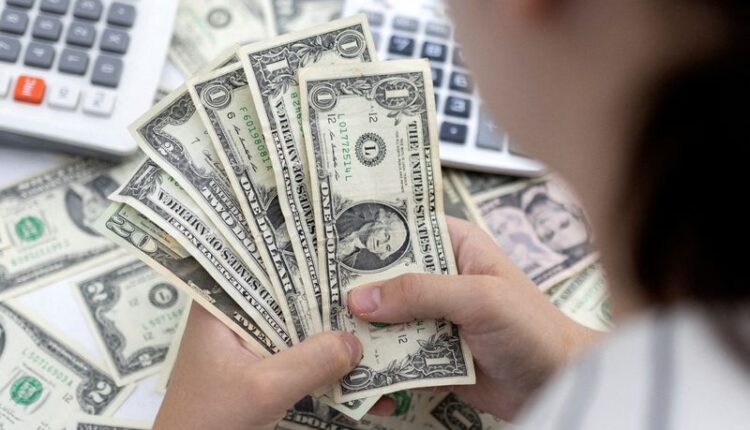Dollar finds friends after sticky U.S. inflation data
By Harry Robertson and Tom Westbrook
LONDON/SINGAPORE (Reuters) – The dollar rose on Wednesday in the wake of stubbornly high U.S. inflation data and tough talk on interest rates from Federal Reserve officials.
U.S. consumer price index (CPI) inflation accelerated month-on-month in January, rising 0.5% as expected, due in part to higher rental and food costs.
Year-on-year, prices rose 6.4%. That was down from 6.5% in December but above economists’ expectations of 6.2%.
The dollar climbed against most major currencies on Wednesday, with the euro down 0.11% to $1.073. The euro touched a 10-month high of $1.103 on Feb. 2 but has since slipped.
“It is a reaction to the CPI data, and also the tone of Fed officials recently,” said Jane Foley, head of FX strategy at Rabobank.
“The market is now expecting a higher peak for the Fed funds rate than they were expecting even a week or two ago.”
Japan’s yen was off by 0.18% at 133.36 per dollar. It touched a six-week low earlier in the session at 133.44.
In December, Fed board members’ median projection foresaw interestt rates peaking at 5.1% this year.
But interest rate futures markets now price a peak above 5.2% and traders are becoming less sure that interest rate cuts are coming in 2023. Rates currently stand at 4.5% to 4.75%.
Fed officials struck a tough tone on Tuesday.
“With the strength in the labour market, clearly there are risks that inflation stays higher for longer than expected, or that we might need to raise rates higher,” New York Fed President John Williams said in New York.
The U.S. dollar index, which gauges the currency against its peers, was up 0.23% to 103.49 after closing roughly flat on Tuesday.
Sterling dropped 0.68% to $1.209 after British inflation cooled more than expected in January to 10.1%, alleviating some of the pressure on the Bank of England to keep hiking rates.
Expectations of higher interest rates tend to make a country’s assets look more attractive, boosting their currencies, and vice versa.
The Australian dollar fell 1.1% to $0.691. Meanwhile, China’s yuan hit a one-month low at 6.845 to the dollar.
Australia’s central bank chief Philip Lowe told members of parliament that rates still had a way to rise.
U.S. retail sales figures are due later in the day.
========================================================
Currency bid prices at 0853 GMT
Description RIC Last U.S. Close Pct Change YTD Pct High Bid Low Bid
Previous Change
Session
Euro/Dollar
$1.0727 $1.0737 -0.09% +0.11% +1.0745 +1.0700
Dollar/Yen
133.3950 133.0200 +0.27% +1.63% +133.4250 +132.7550
Euro/Yen
143.09 142.89 +0.14% +1.99% +143.1400 +142.3500
Dollar/Swiss
0.9236 0.9215 +0.23% -0.11% +0.9248 +0.9214
Sterling/Dollar
1.2096 1.2176 -0.65% +0.03% +1.2181 +1.2072
Dollar/Canadian
1.3390 1.3338 +0.39% -1.17% +1.3397 +1.3336
Aussie/Dollar
0.6910 0.6985 -1.07% +1.37% +0.6989 +0.6893
NZ
Dollar/Dollar 0.6287 0.6338 -0.81% -0.99% +0.6338 +0.6277
All spots
Tokyo spots
Europe spots
Volatilities
Tokyo Forex market info from BOJ

